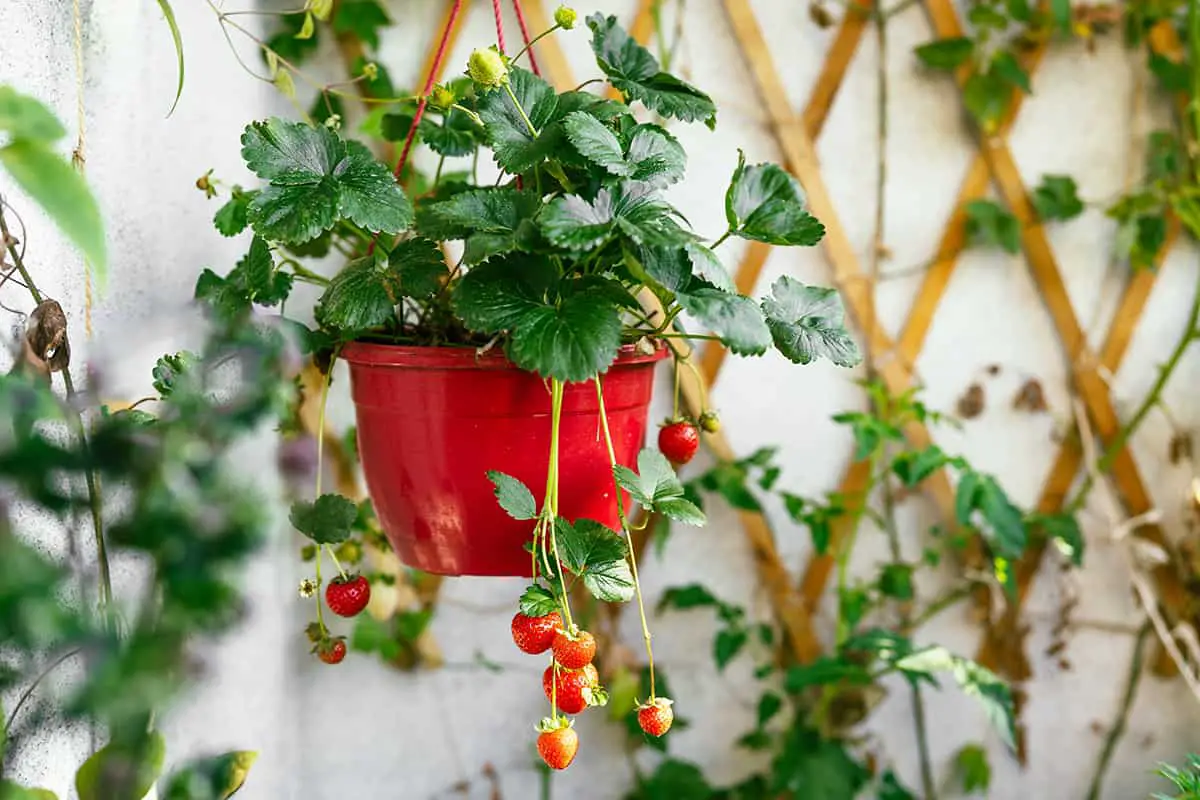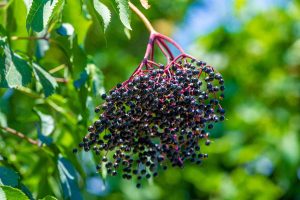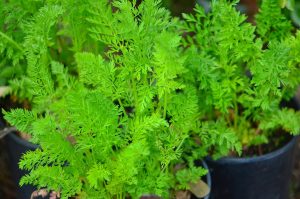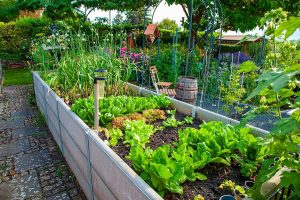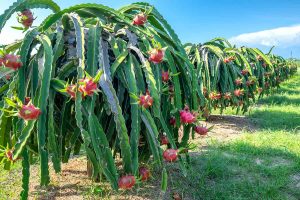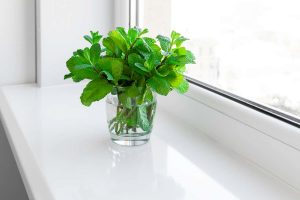Growing fruits in pots and containers offers a versatile way to cultivate fresh produce even when space is limited. You can enjoy a range of tasty, home-grown fruits from the comfort of your balcony or patio. This method is not only convenient but also reduces the need for extensive garden space.
Easy fruits to grow in containers can brighten your home with lush foliage and provide you with a rewarding harvest. This article will recommend some of the easiest and best-suited fruits to grow in pots.
Table of Contents
Strawberries

- Pot Size: Choose pots at least 18 inches across and 8 inches deep.
- Recommended Varieties: Consider ‘Albion’ or ‘Seascape’ for their hardiness.
- USDA Zones: Ideal for zones 5-8, but can vary with the variety.
Growing strawberries in containers is a rewarding experience. You can enjoy fresh, ripe berries from your balcony or patio.
When planting strawberries, ensure they receive full sun. Use fertile, well-draining soil and keep it moist. Regular watering is crucial, especially on hot days.
Fertilize your strawberries two to three times during the growing season. Do this after you’ve harvested the fruit. Use an all-purpose fertilizer according to the package instructions.
For space efficiency, space your plants 12 to 18 inches apart. This spacing ensures maximum fruit production. Strawberries bring the joy of garden-to-table freshness straight to your home, even with limited space.
Blueberries

- Pot size: Minimum 24 inches deep, 24-30 inches wide.
- Recommended varieties: ‘Top Hat’, ‘Jelly Bean’, ‘Peach Sorbet’.
- USDA zones: Zones 3-10 with proper care.
Growing blueberries in containers is a great choice for your balcony or patio. You need the right conditions for blueberries to thrive. These berries favor acidic soil and a sunny location. When you grow them in pots, it’s easier to manage these conditions.
Blueberries have a shallow root system. Choose a container that gives them space to grow. A large container also retains moisture better. In the right pot, your blueberries can flourish for years.
Make sure to water them regularly. Blueberries in pots dry out faster than in the ground. Regular watering keeps the soil at the right moisture level. Mulching can help retain soil moisture.
To encourage fruiting, select a sunny spot. Blueberries need at least six hours of sunlight daily. More sun leads to sweeter berries. Protect them from harsh winds which can damage their delicate flowers and fruit.
Remember to fertilize your blueberries. Use a balanced, acid-forming fertilizer to maintain the soil pH they love.
Raspberries
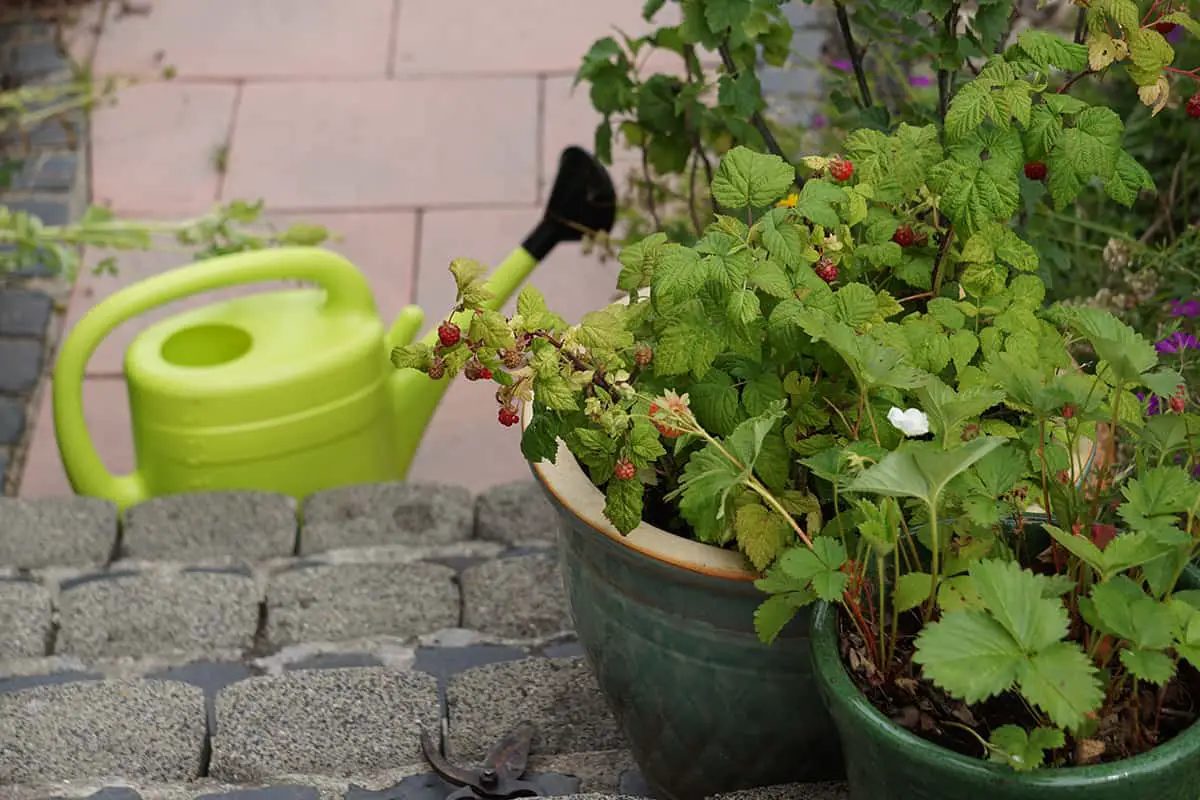
- Pot Size: Minimum 24 inches in diameter
- Recommended Varieties: Heritage, Autumn Bliss
- USDA Zones: 3-9
Growing raspberries in pots and containers is achievable. You need the right conditions and care techniques. They thrive in sunlight, so place your pots in a sunny spot. Raspberries in containers can yield a bountiful harvest just like those in gardens.
Water your raspberry plants regularly to keep the soil consistently moist. This will encourage healthy growth and fruit production. Pruning is essential for maintaining plant health. Remove dead canes each spring to allow new growth.
Your raspberry container requires feeding. Apply a balanced fertilizer as per the product’s instructions. Monitor for pests and diseases. Keep your plants clean and well-maintained to prevent issues.
Dwarf Lemon Trees
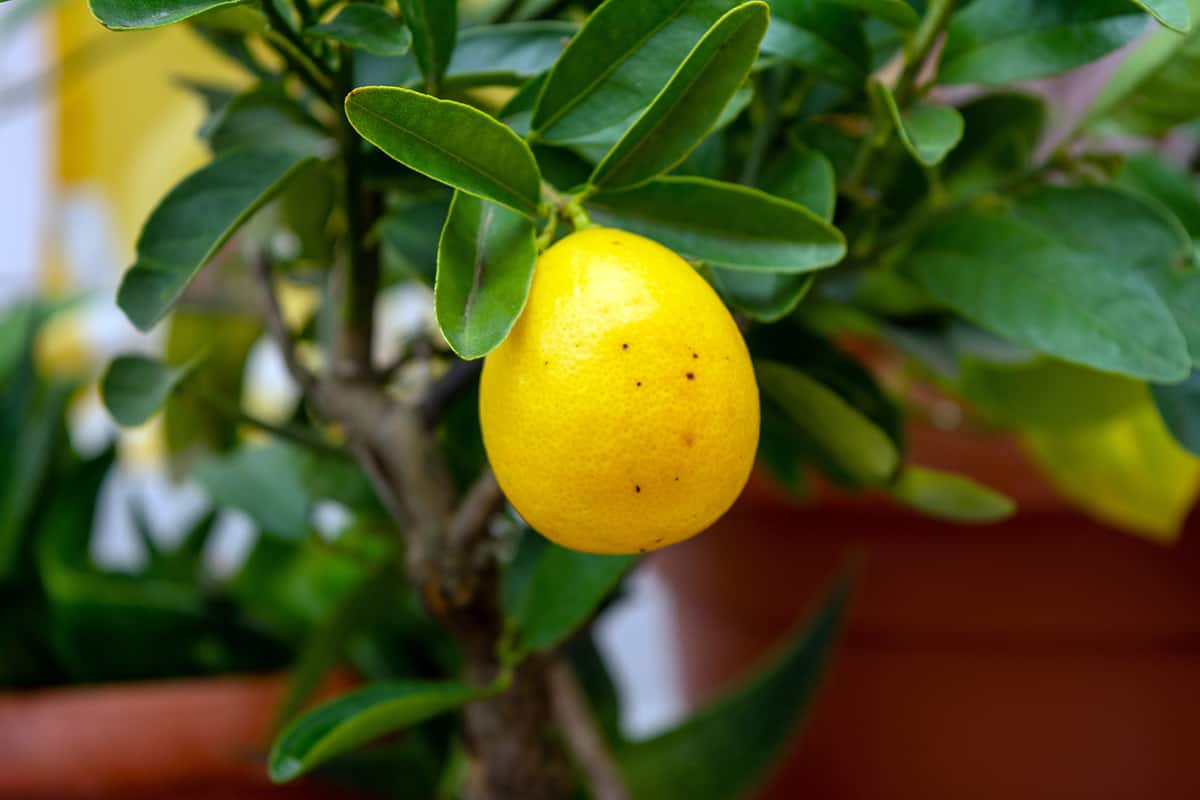
- Pot Size: Minimum 5-gallon capacity. Larger pots for more robust growth
- Recommended Varieties: Meyer lemon, known for its sweeter flavor; Ponderosa lemon, produces large fruit
- USDA Zones: Best for zones 9 to 11 and cooler zones with indoor care
Dwarf lemon trees are ideal for growing in pots and containers. You can enjoy homegrown citrus even with limited space. These trees typically reach 3 to 6 feet in height, making them perfect for indoor and outdoor settings.
Dwarf Lime Trees
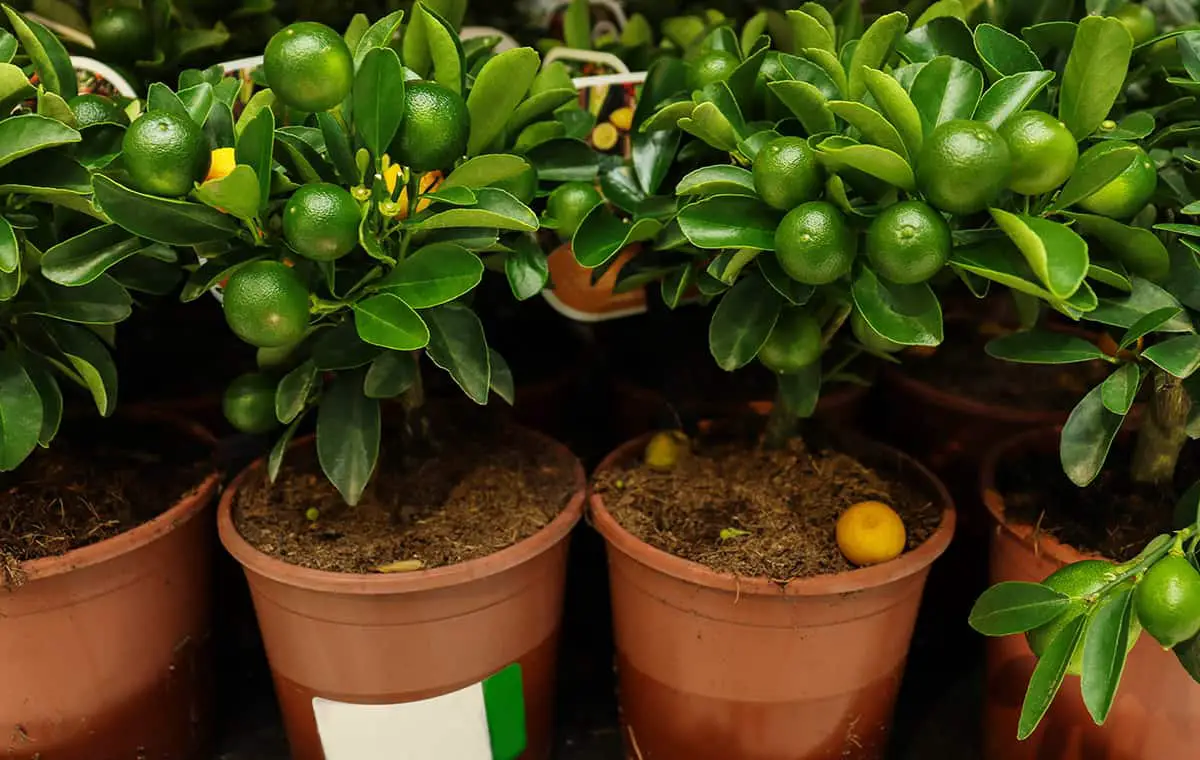
- Pot size: Minimum 8-12 inches wide
- Recommended varieties: ‘Bearss Seedless’, ‘Kaffir’, ‘Persian’
- USDA zones: 8-11, indoors for colder regions
Growing dwarf lime trees in pots is a convenient way to enjoy fresh citrus. You can easily place them on patios or indoors with proper light. Dwarf lime trees need certain conditions to thrive, but your efforts will reward you with aromatic fruits.
Dwarf lime trees are grafted onto rootstocks, making them ideal for containers. They are small and manageable for home gardeners. You’ll need to provide enough light and consistent care. With these, you can expect juicy limes within arm’s reach.
Dwarf Orange Trees
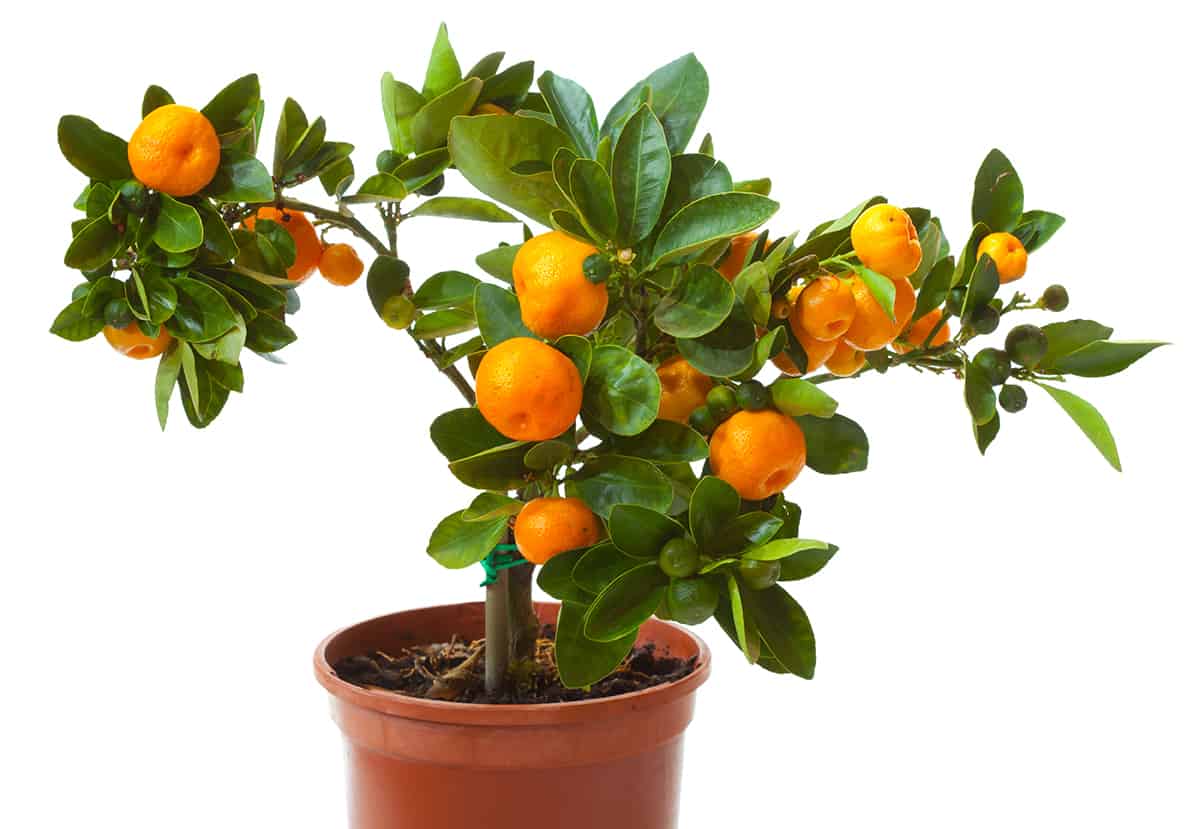
- Pot size: Minimum 12 inches deep and wide
- Recommended varieties:
- ‘Meyer Lemon’ for a tangy-sweet flavor
- ‘Washington Navel’ for a classic orange taste
- USDA zones: 9 through 11 for outdoor growing
Dwarf orange trees are an excellent choice for indoor or balcony gardening, making them perfect for those with limited space. Despite their compact size, these trees are capable of producing full-sized oranges.
Water regularly to keep the soil moist. Provide ample sunlight, at least 6 hours a day. Feed them with citrus fertilizer according to the product’s instructions. Protect from extreme cold by bringing them indoors during winter.
Regular pruning will maintain their manageable size.
Dwarf Cherry Trees
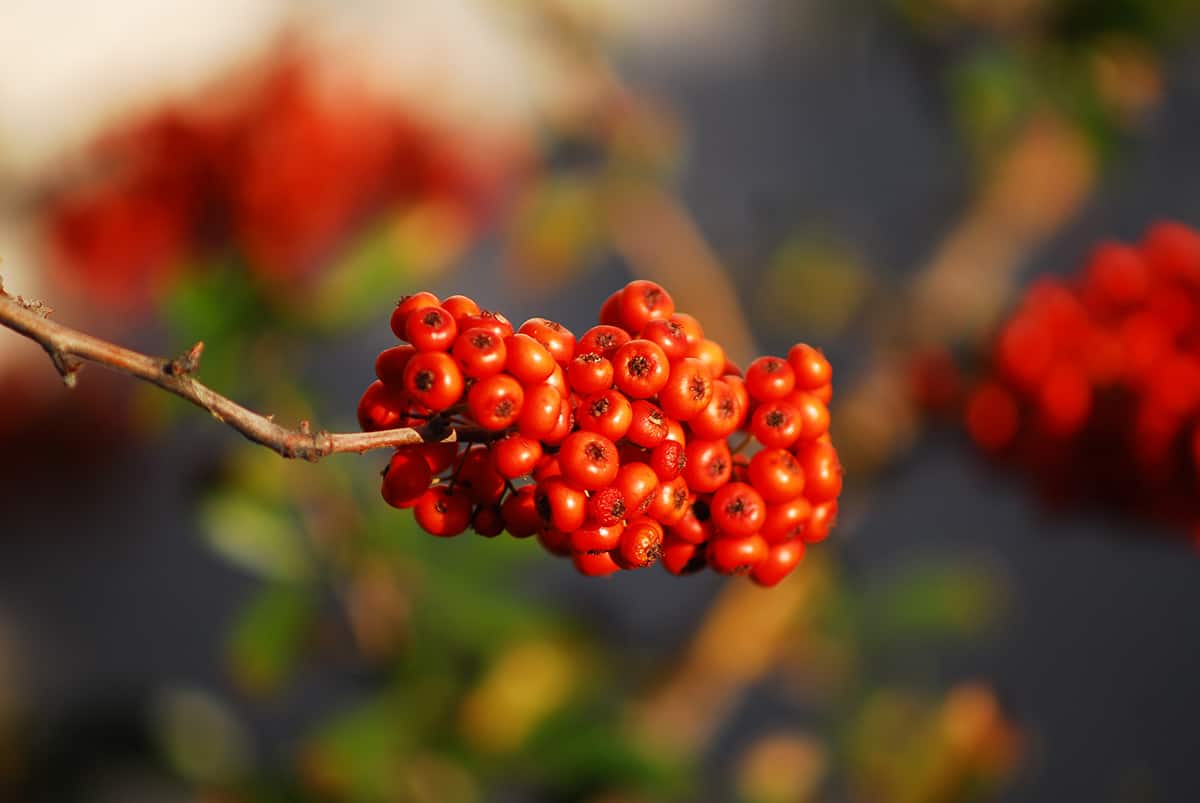
- Pot Size: Minimum 15-inch diameter pot recommended.
- Recommended Varieties:
- ‘North Star’ is known to perform well.
- Compact Stella offers sweet fruit and self-pollination.
- USDA Zones: Generally suitable for zones 5 to 7.
Dwarf cherry trees are ideal for growing in pots and containers. You can enjoy fresh cherries even if you have limited space. Small in stature, these trees still produce a bounty of fruit.
Figs

- Pot size: Minimum 15-gallon container
- Recommended varieties: ‘Brown Turkey,’ ‘Celeste’
- USDA zones: 8-11 suitable for outdoor growing
Edible fig trees are suitable for small spaces. They grow well in pots and produce sweet fruit. You can easily manage fig trees in containers.
Grapes

- Pot size: At least 15-20 gallons, 16-18 inches deep, and 18-24 inches wide
- Recommended varieties: ‘Pixie’, ‘Reliance’, or ‘Thomcord’
- USDA zones: Generally suited for zones 5-9
Grapes thrive in containers, offering a convenient option for your garden. You can produce these flavorful fruits on your balcony or patio. Here’s how to ensure success growing grapes in pots.
Choose a large container for your grapevine. It needs ample space for roots to spread out. Drainage holes are critical to prevent waterlogging. Select a sunny spot; grapes love the sun.
Care for your grapevine involves regular watering and occasional fertilizing. Support with a trellis or stake is essential as they grow. This ensures a healthy vine and bountiful grape production.
Dwarf Banana Plants
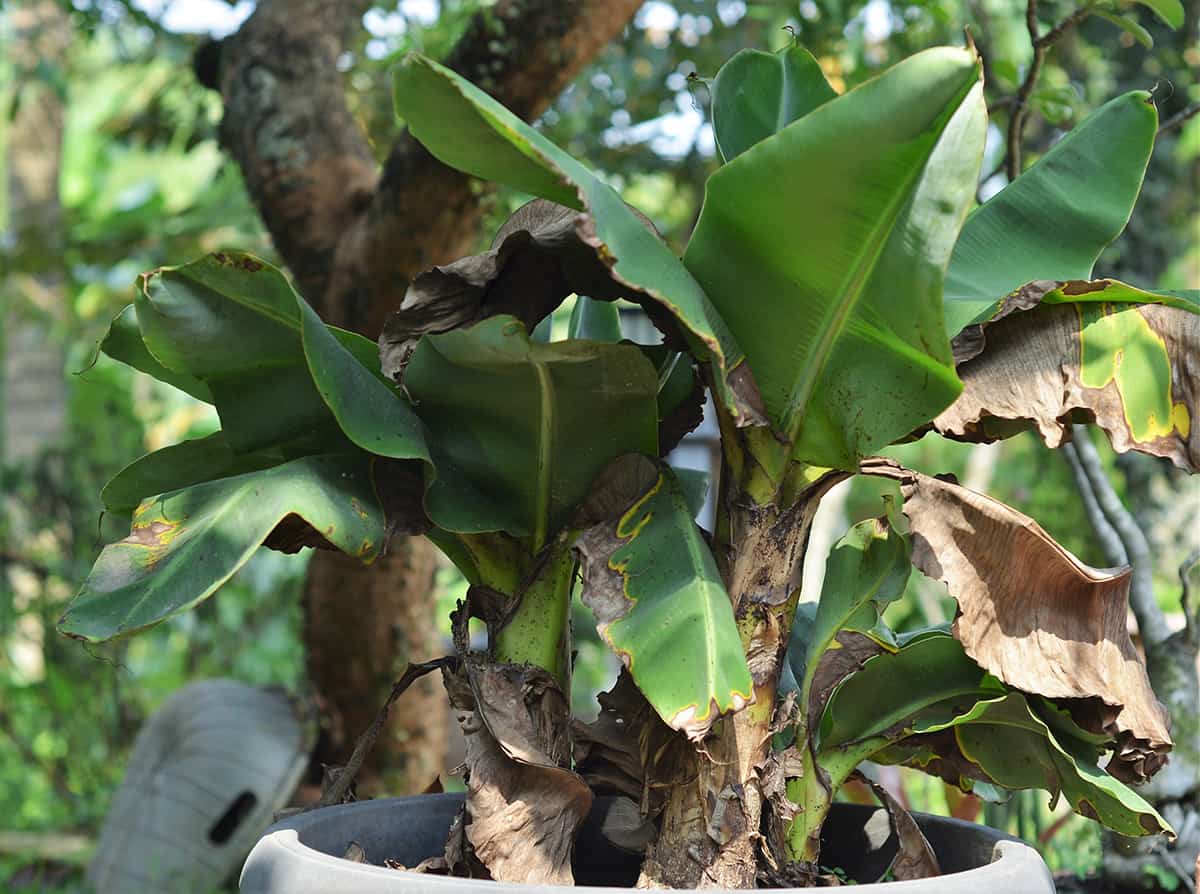
- Pot Size: At least 15 gallons to ensure adequate root space
- Recommended Varieties: Dwarf Cavendish, Rajapuri, Williams Hybrid
- USDA Zones: Ideal for zones 9-11, but can thrive indoors with care
You can grow Dwarf banana plants easily in pots on your patio or balcony. They give your space a tropical feel and provide delicious fruit. These plants stay small, making them great for limited spaces.
Choose a large pot with proper drainage. Fill it with rich, well-draining soil. Place your dwarf banana plant where it gets full sunlight. Water regularly, keeping the soil moist but not waterlogged.
Dwarf Peach Trees
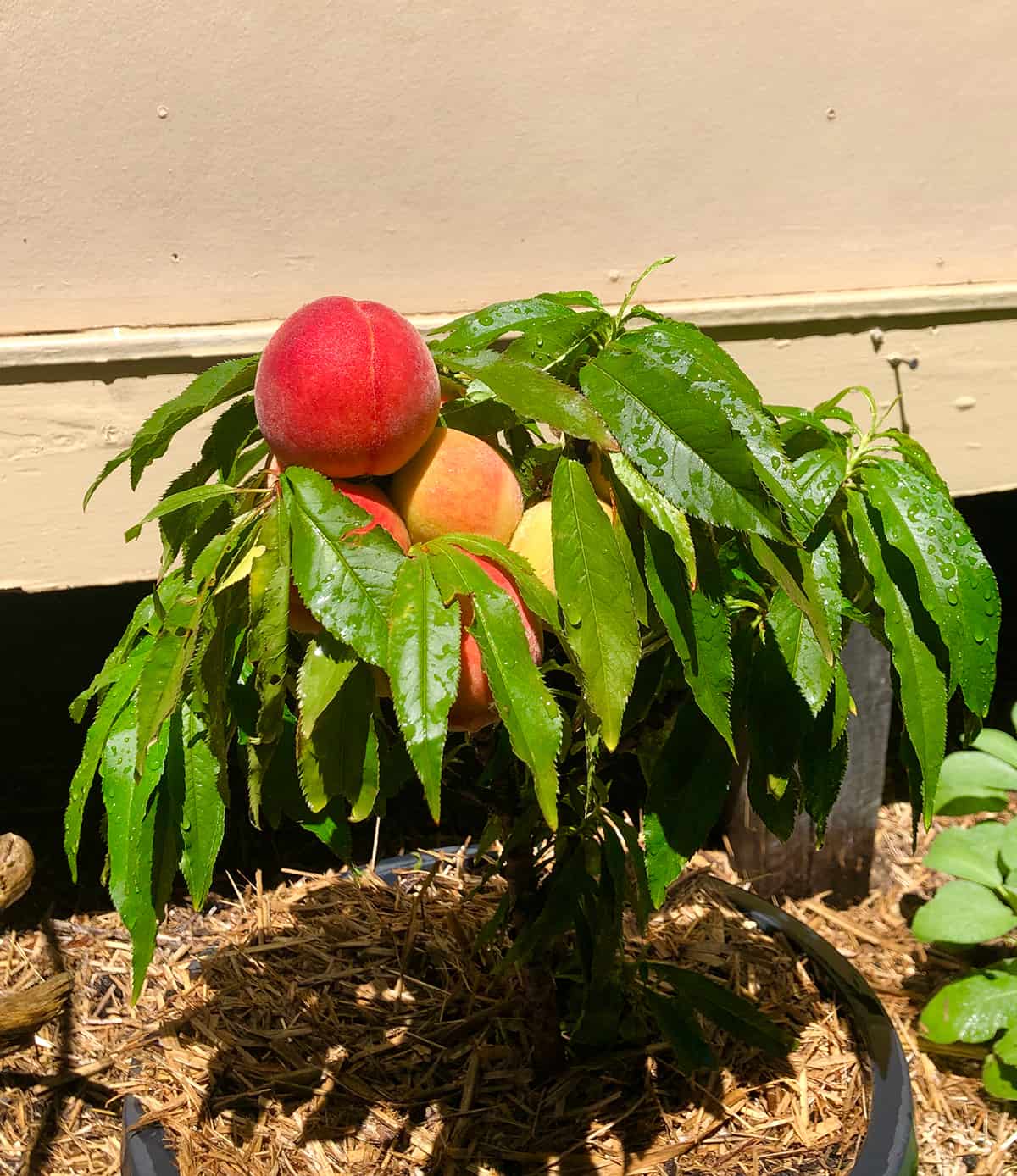
- Pot Size: Minimum 12- to 16-inch diameter
- Recommended Varieties: ‘Bonanza’, ‘El Dorado’, ‘Honey Babe’
- USDA Zones: Generally suitable for zones 5-9
Dwarf peach trees are ideal for container gardening. They require less space and are easier to manage than full-sized trees.
Ensure they get full sunlight and well-draining soil. Regular watering and fertilization are key to healthy fruit production. Prune yearly to maintain shape and size.
Keep pests at bay with natural methods. Companion plants or insecticidal soaps can help. Watch for common issues like leaf curl or aphids, and treat them promptly.
Enjoy the blooms in spring and the fruit in summer.
Dwarf Apple Trees
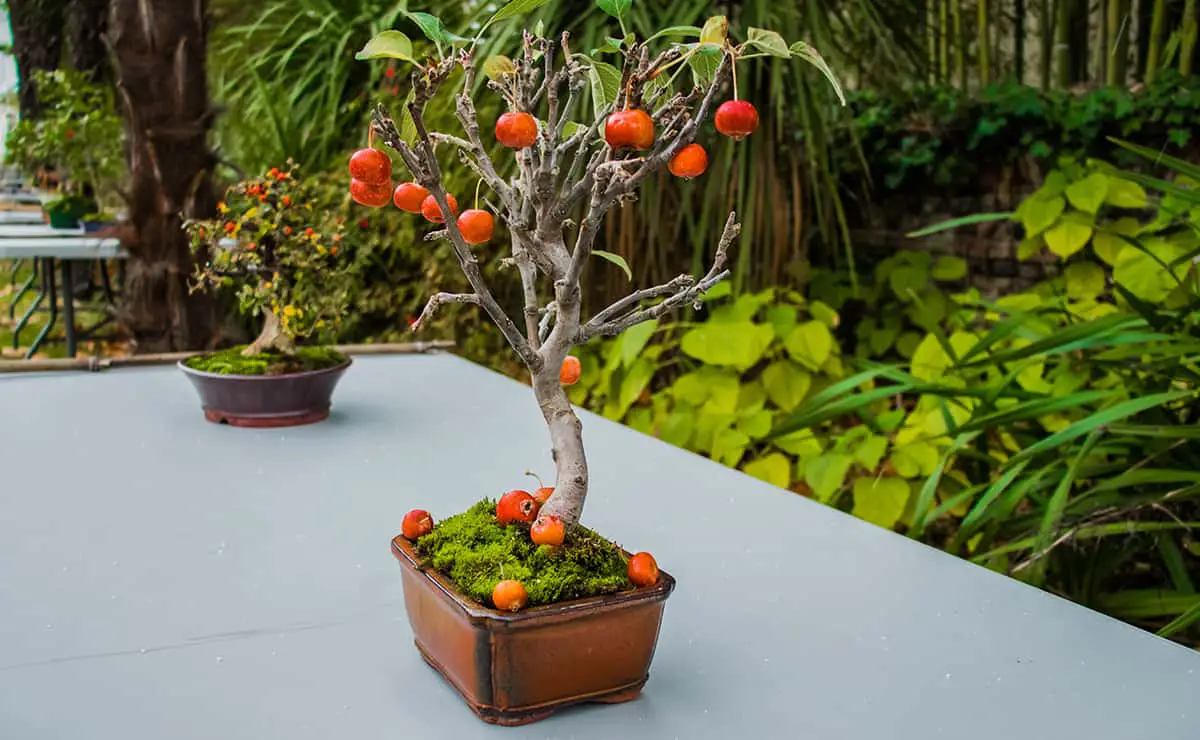
- Pot Size: Minimum 12 inches in depth and 18 to 24 inches in diameter
- Recommended Varieties:
- Gala, Honeycrisp, Fuji
- Suitable for container growth
- USDA Zones: Generally, zones 4 to 8
Dwarf apple trees are ideal for growing in pots and containers. Their compact size makes them suitable for small spaces. You can grow healthy apple trees in your own balcony, patio, or urban garden.
Dwarf Pear Trees
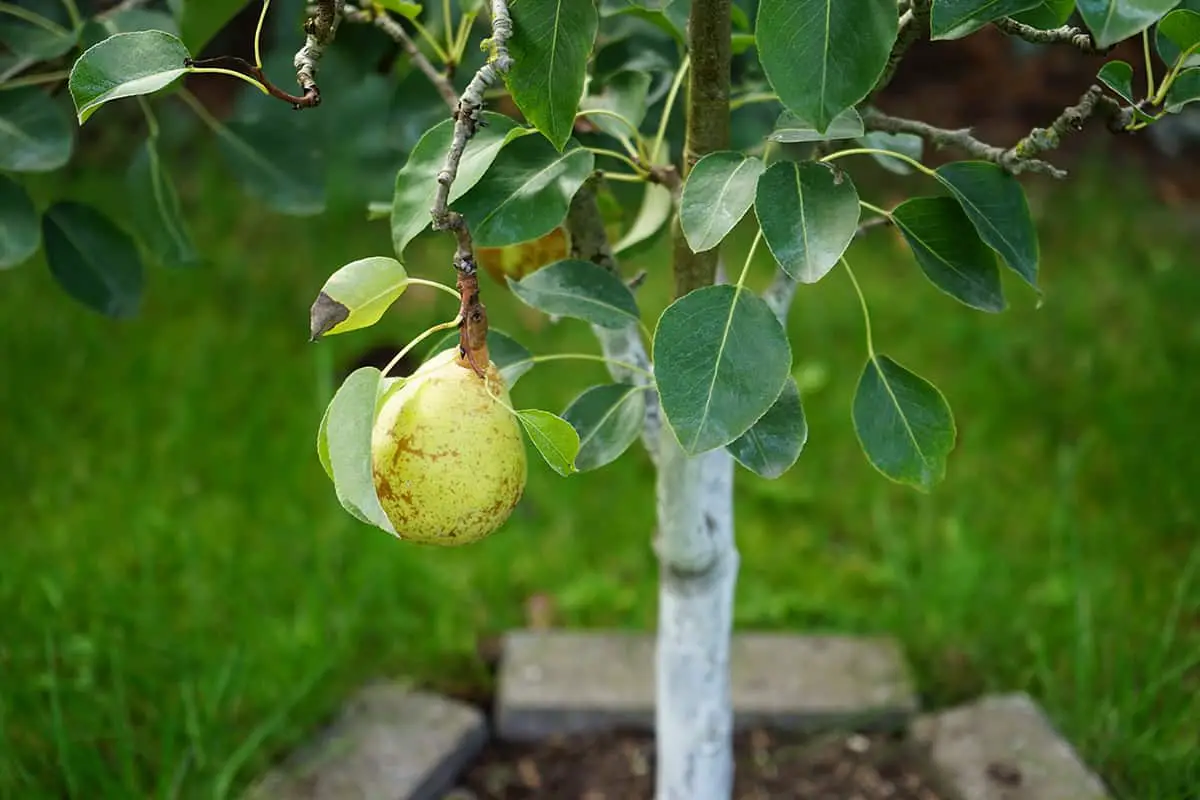
- Pot Size: Start with 10-12 inch container. Upsize as the tree grows
- Recommended Varieties:
- Bartlett or Bosc for colder climates
- Seckel for sweetness and flavor
- USDA Zones: Suitable for zones 5-7. Protect in regions with harsh winters
Growing dwarf pear trees in pots is a practical way to enjoy fresh fruit. These smaller trees fit well in limited space. You can manage them conveniently in a suitable container on your patio or balcony.
Dwarf pear trees require minimal maintenance. They need regular watering and full sunlight. Prune annually to maintain health and productivity.
Dwarf Plum Trees

- Pot size: at least 8 to 10 inches in diameter.
- Recommended varieties: ‘Dwarf Santa Rosa’ and ‘Dwarf Damson’.
- USDA zones: 5 to 9, depending on the variety.
Dwarf plum trees are specifically bred to stay smaller than their standard counterparts, making them perfect for container gardening.
By selecting the right variety and providing consistent care, your dwarf plum tree will thrive. They need regular watering and full sun to produce the best fruit. Pruning is also important to maintain their size and shape. Enjoy the process, and soon you’ll have your own plums to savor.
Kiwi (Hardy Kiwi)

- Pot Size: Minimum 5-gallon container
- Recommended Varieties: ‘Issai’ and ‘Ananasnaya’
- USDA Zones: 4 to 8
Growing the hardy kiwi in containers is achievable. You can enjoy home-grown kiwiberries with proper care. Hardy kiwi vines are suited for pot cultivation. Container growth ensures manageable plants.
Select a large container for your kiwi plant. Ensure it has sufficient drainage. Kiwiberries require moist, well-drained soil. Position your pots in a location with full sunlight. Remember, kiwi vines need both male and female plants to produce fruit. You’ll only get berries if you have both genders.
Regular watering is crucial for kiwi plants. They thrive in consistently moist soil conditions. Fertilize your plants in the spring. Use a balanced fertilizer to encourage growth and fruiting. Pruning is necessary for containing the vine’s size in a pot. Train vines onto a sturdy support or trellis. This supports your kiwi’s rapid growth and can help with fruit production.
